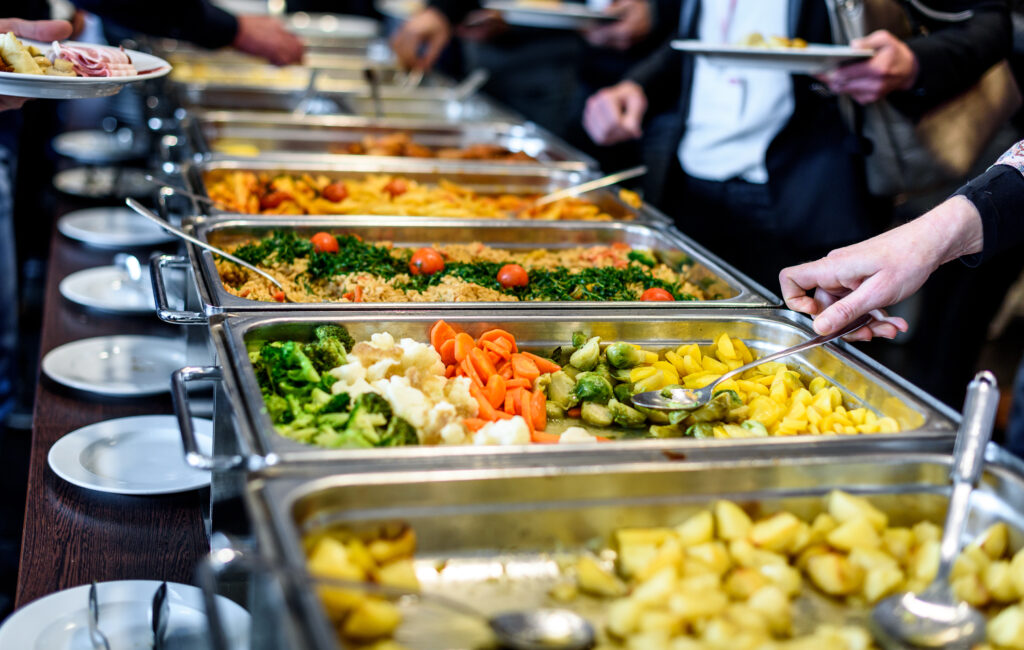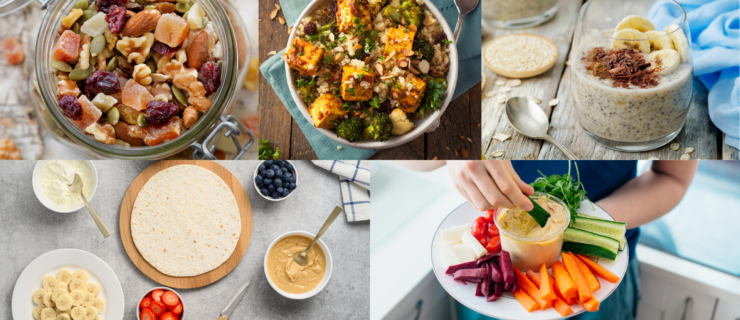4 Nutrition Strategies for Your Best Summer Ballet Intensive
As you gear up for a busy summer filled with intensive training, rehearsals, and performances, it’s crucial to recognize the importance of a proactive eating plan. Adopting meal and snack strategies that support your training, especially while navigating a busy schedule, equips you with the energy, endurance, and strength you need to finish the summer strong.
But with less time to prep, limited access to kitchens, and more confusion at mealtimes, dancers at intensives can easily fall into habits that leave them drained and depleted of energy. The pressure to prove yourself in a short period can also lead to challenges with both food and body image.
To make sure you get the most out of your intensive experience, here are four steps you can take for a supportive summer meal plan.
1. Ask ahead.
Reach out to your intensive and ask about mealtimes. Will meals be eaten in a dining hall or cafeteria? Will you have access to a mini fridge or communal kitchen? How about access to local grocery or convenience stores? This information can help as you prepare both practically and financially. If you’re able to store some options in a fridge or pantry, grab a journal and brainstorm ingredients that are easily obtainable and packable. You can pick up grab-and-go fruit like apples, bananas, and oranges from most dining halls. If your storage options are limited, consider nonperishables like nuts, trail mix, dried fruit, hummus packs, granola, fruit bars, and pretzels.
2. Aim for flexibility and variety.
Food flexibility is important, especially when relying on dormitory food plans. New foods can spark excitement for some, and anxiety for others. If you’re feeling nervous about dining options, aim for balance and prioritize variety. This will ensure you’re accessing a variety of nutrients to support your energy and muscle recovery. Since carbohydrates should make up at least half of a dancer’s diet, consider options like pasta, rice, oats, grits, quinoa, and potatoes. These foods also provide long-lasting energy and nutrients, like fiber and B vitamins, to keep your metabolism running smoothly. Then, pair your carbs with a source of protein. Chicken, cheese, eggs, and yogurt are easy mealtime additions. If they’re available, you can also go for plant-based alternatives like tofu, canned beans or lentils, and dairy-free options. And if dessert is offered, don’t fear it! Rather, enjoy it as part of a balanced meal, considering mindful eating techniques along the way.

3. Drink lots of water.
Staying hydrated is critical year-round, but especially when dancing during the hot summer months. Establishing baseline habits is helpful; invest in a reusable water bottle and aim to fill it at least twice a day. You’ll want to hydrate before, during, and after dancing. If you’re prone to sweating, electrolyte-rich beverages like sports drinks will help to replenish essential minerals like sodium and potassium, which are naturally lost through sweating. Pairing salty snacks like pretzels or Goldfish crackers with coconut water is another way to replenish electrolytes. Remember: Proper hydration is a continuous effort, so taking regular drink breaks during long and active dance days is a necessity.
4. Steer clear of nutrition misinformation.
While you can gain technical growth at summer intensives, you can also pick up unsustainable eating patterns if you’re not careful. Identifying harmful diet-talk from peers is crucial—pay attention to behaviors that may indicate disordered eating. Red flags include obsessive calorie counting, rigid food rules (like avoiding entire foods or food groups), and, even subtler, “clean” eating goals. While emphasizing nutrition is helpful, obsessive tendencies can interfere with your dancing and overall health. If you’re comparing your food choices to those of another dancer, remember these important truths:
- My body deserves adequate and reliable nourishment.
- Everyone has different nutritional needs.
- What one dancer is doing may not be supportive or reflective of what I need.
A well-designed nutrition plan will help you succeed this summer. By prioritizing abundance and variety, along with drinking enough water, you can support your dancing and reduce your risk of injury. Knowing the risks of restrictive eating can also help you avoid these problematic behaviors. But if these strategies feel challenging or unattainable on your own, consult with a registered dietitian nutritionist. Many intensives are outsourcing to dietitians for nutrition workshops—if yours does, take advantage! Use this as an opportunity to ask questions and gain insights about how you may be able to work with a dietitian. Ask ahead for referrals, and don’t be shy to reach out for individualized support. After all, the goal of intensives is to help you grow and dance your best.







